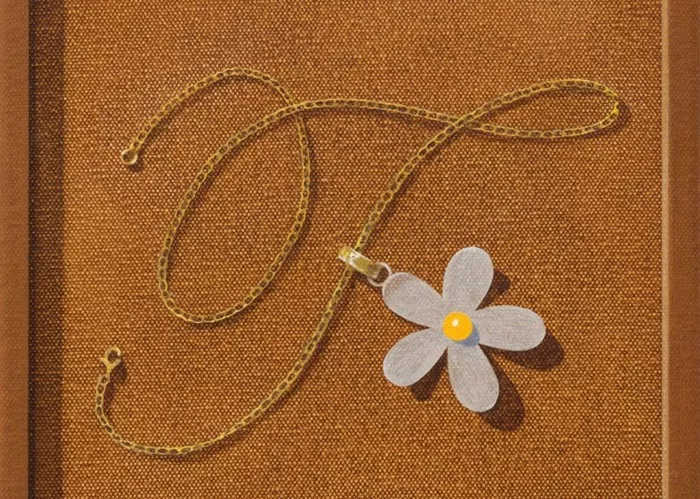As a jewelry designer, the material combination of each piece is not only an aesthetic choice but also a carrier of culture and emotion. Necklaces made of freshwater pearls and amethysts, due to their natural qualities and historical significance, have become classic designs that combine elegance and spirituality. The following analyzes its profound meaning from four dimensions: material properties, cultural traditions, energy symbols, and modern design.
The symbolic language of the material itself
Freshwater pearls: Tough yet moist
Freshwater pearls are naturally nurtured by shellfish in rivers and lakes. Their formation process is long and full of uncertainties, symbolizing:
Purity and Rebirth: Pearls are associated with “the moon” and “water” in both Eastern and Western cultures, representing a woman’s softness, fertility and flawless character.
Inner strength: The birth of pearls requires shellfish to repeatedly wrap around foreign objects, symbolizing “turning pain into treasure”, echoing the spirit of modern women’s “flexible growth”.
Low-key luxury: Unlike the dazzling brilliance of diamonds, pearls have a reserved luster, embodying “unassuming nobility”.
Amethyst: The crystallization of spirituality and wisdom
As a purple variant of the quartz family, amethyst has a symbolic meaning spanning thousands of years:
Spiritual awakening: The ancient Greeks believed that amethyst could prevent intoxication, and medieval bishops wore their rings to show “clarity and piety.
Wisdom and Balance: In the energy theory, amethyst corresponds to the “Crown Chakra”, which helps to clear thinking and relieve anxiety, making it suitable for people under high pressure.
Royalty and Power: Due to its rarity, European royal families once monopolized the production of scepters and crowns made of amethyst, symbolizing status and dignity.
From the designer’s perspective: When the two are combined, the “earth” element (stability) of the pearl and the “wind” element (thinking) of the amethyst complement each other, endowing the necklace with a philosophical beauty of “softness yet strength”.
Dual Perspectives in Cultural Traditions
Eastern culture: Auspiciousness and protection
Pearl: In China, pearl is the embodiment of “dragon Pearl”, representing wealth and auspiciousness. In Japanese culture, pearls are associated with the spirit of “harmony”, symbolizing completeness.
Amethyst: One of the seven treasures in Buddhism, it is believed to ward off evil and protect the body. In the Qing Dynasty, officials often made amethyst as court beads, symbolizing “honesty and integrity”.
Western Tradition: Faith and Romance
Pearl: In Christianity, it symbolizes “purity of the Kingdom of Heaven”. A bride wearing a pearl necklace implies “a complete marriage”. During the Victorian era, pearl mourning jewelry expressed “the eternity of tears”.
Amethyst: In the Bible, it is called “the priest’s stone”. In Roman mythology, the god of Wine transformed it into amethyst to protect his maiden, thus giving rise to the legend of “guarding love”.
Designer’s approach: In modern design, cultural symbols can be enhanced through inlay techniques – for instance, Chinese “Ruyi Knot” chains can be used to blend Eastern and Western imagery, or European vine reliefs can be employed to set off a classical charm.
Energy Theory and Modern Psychological Needs
Under the influence of contemporary spiritual trends (such as crystal healing), this type of necklace has been endowed with more psychological meanings:
Emotional balance: The calming effect of amethyst combined with the “soothing water energy” of pearls makes it suitable for people suffering from anxiety and insomnia to wear.
Creativity stimulation: Designers often place amethyst at the collarbone position (close to the throat chakra), suggesting “self-expression”, while pearls are close to the heart (emotional center).
Female empowerment: Many independent women choose this combination because pearls represent “self-acceptance” and amethyst symbolizes “breaking through limitations”, echoing the value of “gentle yet firm”.
Case reference: In the eco-friendly jewelry collection of the brand Monique Pean, the combination of amethyst and recycled pearls directly points to the theme of “natural healing”, which aligns with the pursuit of physical and mental health by the millennial generation.
Symbolic Expression Techniques in Design
As a designer, how can one enhance symbolic meaning through craftsmanship?
Proportion and Layout
The main stone is amethyst and decorated with pearls: highlighting “wisdom leading and elegance complementing”.
Pearls surrounding amethyst: creating a visual narrative of “protection” or “the moon surrounded by stars”.
Color contrast
Light amethyst paired with white pearls: fresh and intellectual; Deep purple with champagne gold pearls: retro and mysterious.
Metal material selection:
Silver Chain: Enhances the “cold spirituality” of amethyst;
Rose gold: A “warm tone” that harmonizes with pearls, adding a modern touch.
Taboo: Avoid direct friction between amethyst and pearl (due to significant hardness differences). Use metal separators or silk thread to wrap them, which also implies “harmony within differences”.
Conclusion
The symbolic meaning of freshwater pearl and amethyst necklaces is not only a condensation of a thousand years of culture but also an extension of the wearer’s personal story. As a designer, my task is to transform the duality of “purity and wisdom” and “softness and strength” into wearable art through material dialogue, structural balance and detail metaphor. When a woman chooses such a necklace, she might be saying, “I am as inclusive as water and as clear-headed as amethyst.”
Related topics:
How to Handle Oxidized Antique Silver – Set Amethyst Necklace?
Where to Find Amethyst Crystals: A Global Guide
Discover the True Value of Amethyst Gemstones in Jewelry


